Abstract
1. A technique is described whereby (i) quick stretches and releases of controlled velocity, amplitude and time of onset can be applied to muscle. (ii) Releases from isometric to isotonic contraction can be performed at controlled delays relative to the stimulus, and displayed on a delayed expanded oscilloscope sweep. An isotonic lever system with an equivalent mass of 12·8 mg is described.
2. Quick stretch of rabbit or cat papillary muscle after excitation does not result in a level of tension equal to or greater than normal peak isometric tension appropriate to the stretched length. Stretches applied during the first half of the rising phase of tension development give responses nearly identical to the same stretches applied before the stimulus (indicating that Starling's Law of the heart holds until this time). Stretches applied in the later phase of tension development or during relaxation result in diminished peak isometric tensions or accelerated relaxation.
3. The rate of tension development following quick releases of isometrically contracting muscle to zero tension is not maximal until the releases are made 150-200 msec after excitation.
4. Shortening velocity with light afterloads is not initially maximal nor constant for an appreciable period of time. The shortening velocity with heavy afterloads reaches its maximum more rapidly when the load is not lifted within the first 200 msec of a contraction which, if maintained isometric, would have required 400-500 msec to reach peak tension. With these heavier loads, a period of 100-200 msec of constant shortening velocity may occur.
5. Freeloaded isotonic contractions show an inflexion in their shortening curves occurring 150-200 msec after excitation.
6. Maximum rate of isotonic shortening following releases from isometric to isotonic contraction with a given load is not maximal until the releases occur about 200 msec after the stimulus.
7. It is concluded that contractility in cardiac muscle is relatively slow in its onset with maximum capacity to shorten occurring about midway through the rising phase of isometric tension development.
Full text
PDF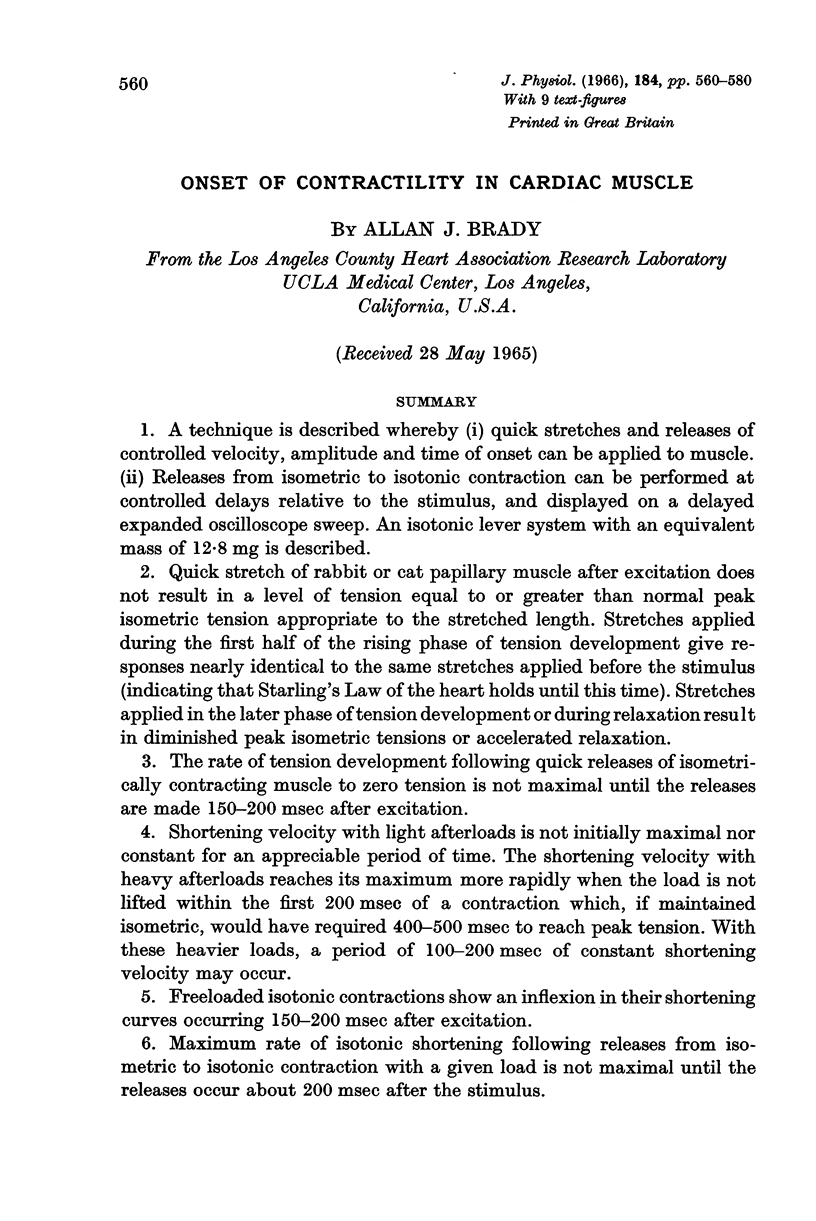
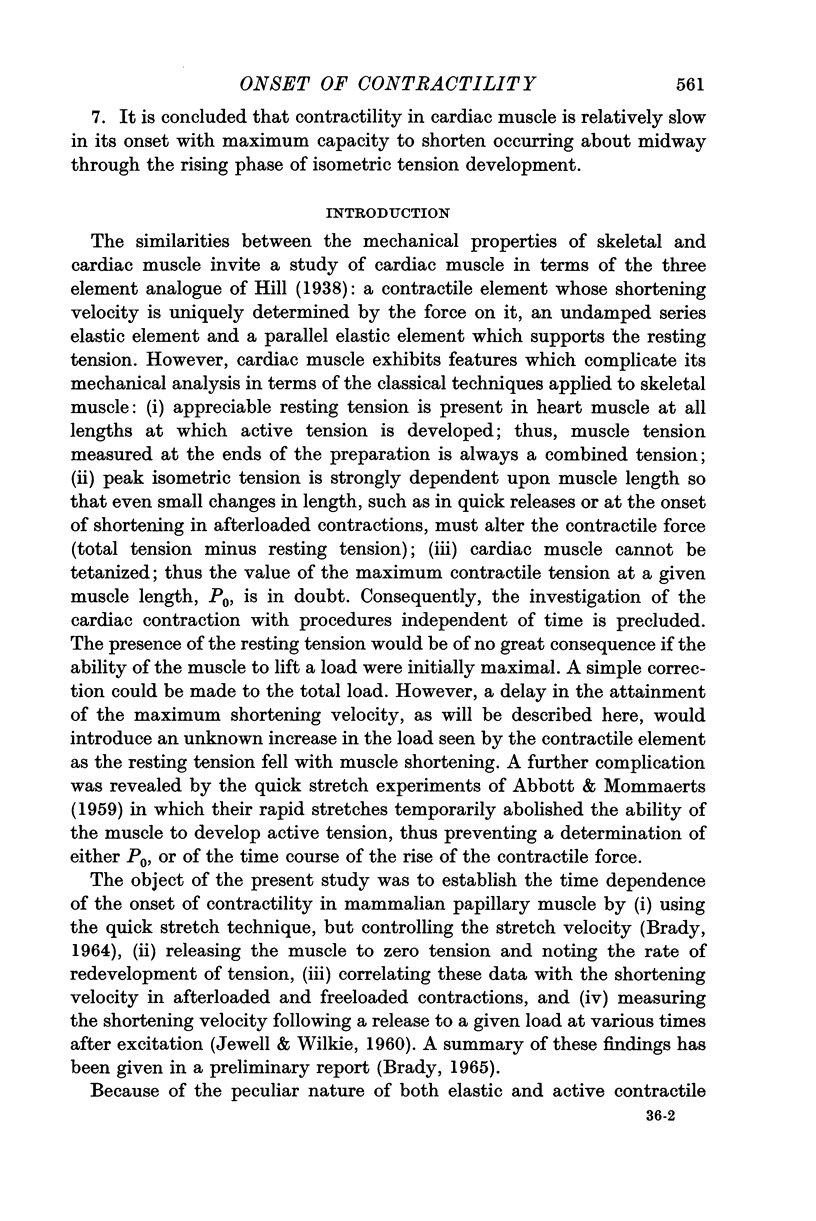
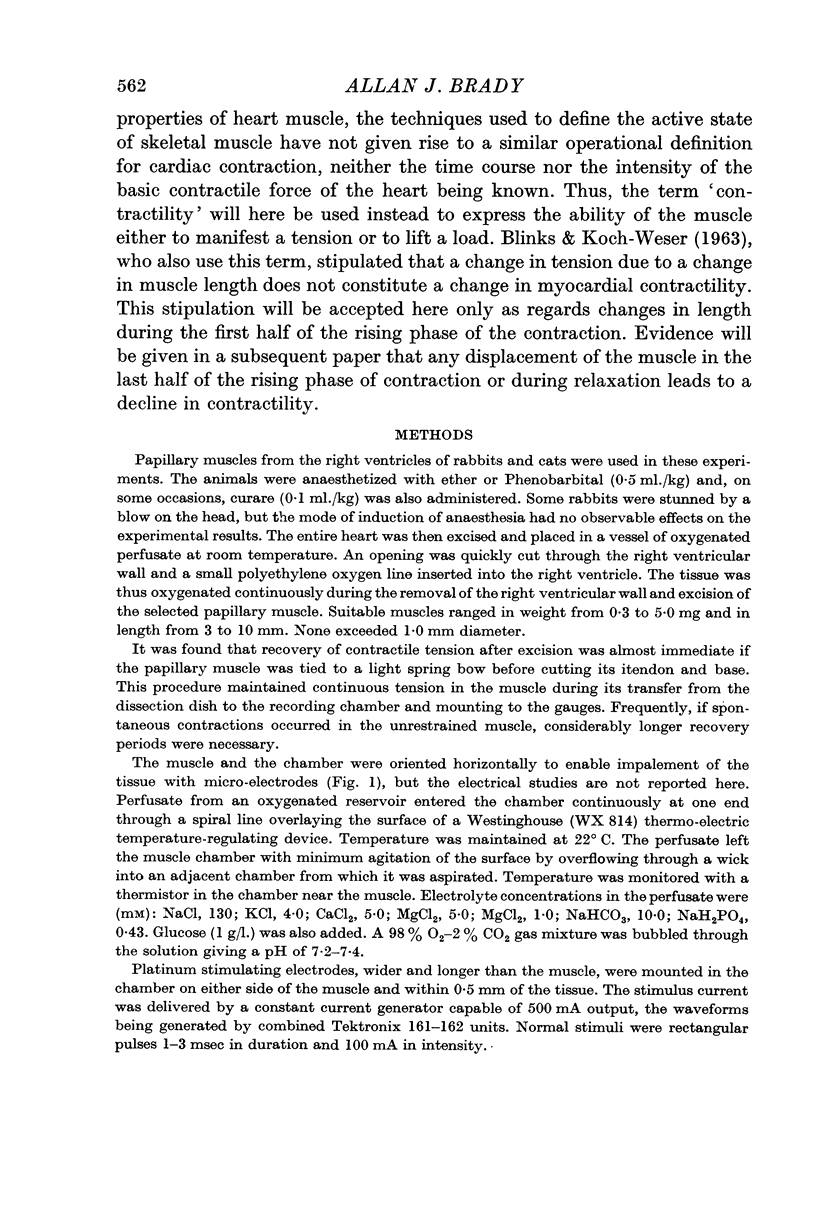
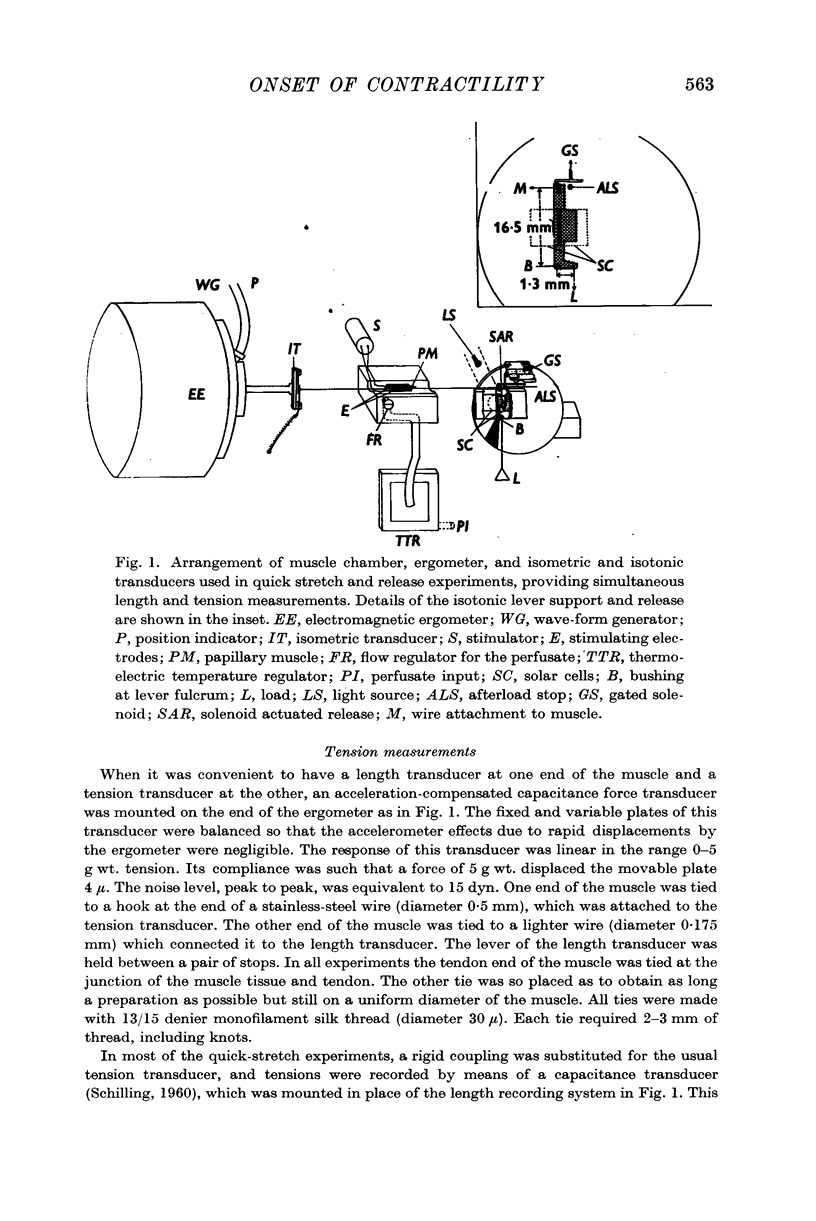
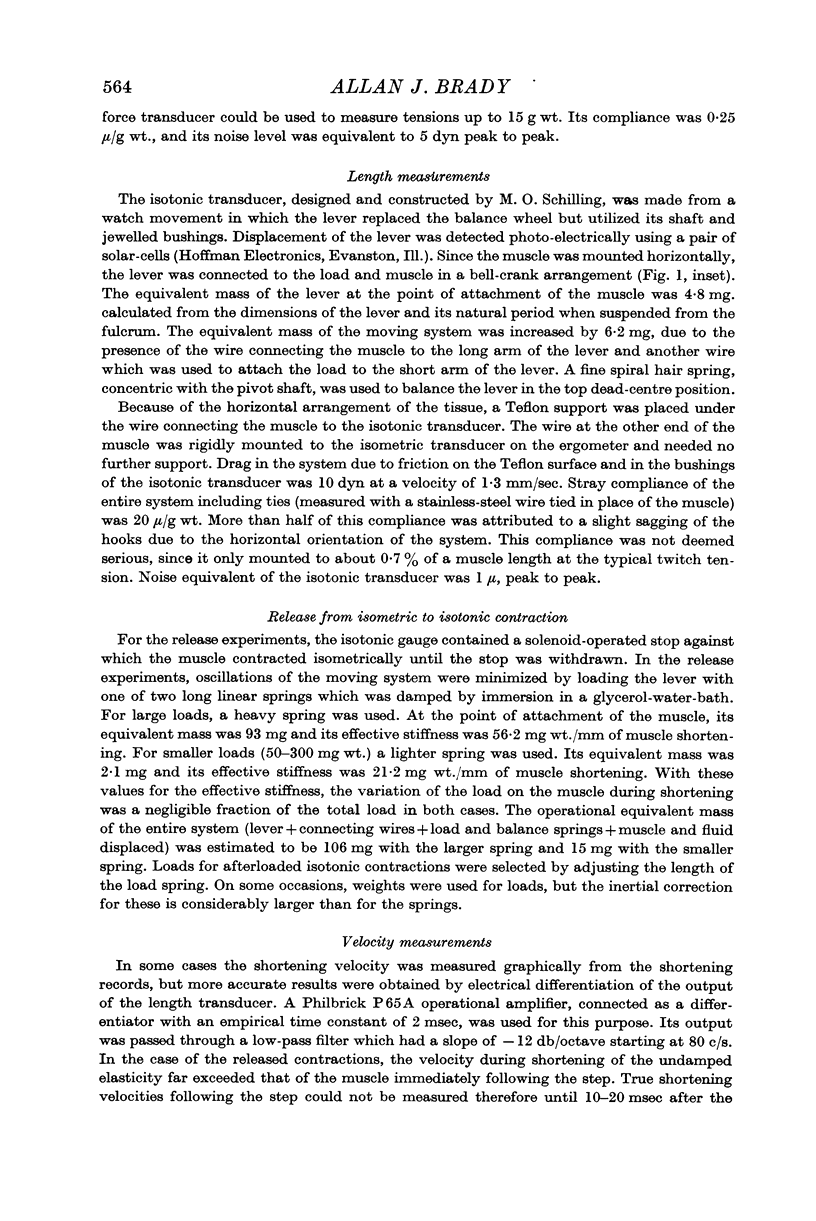
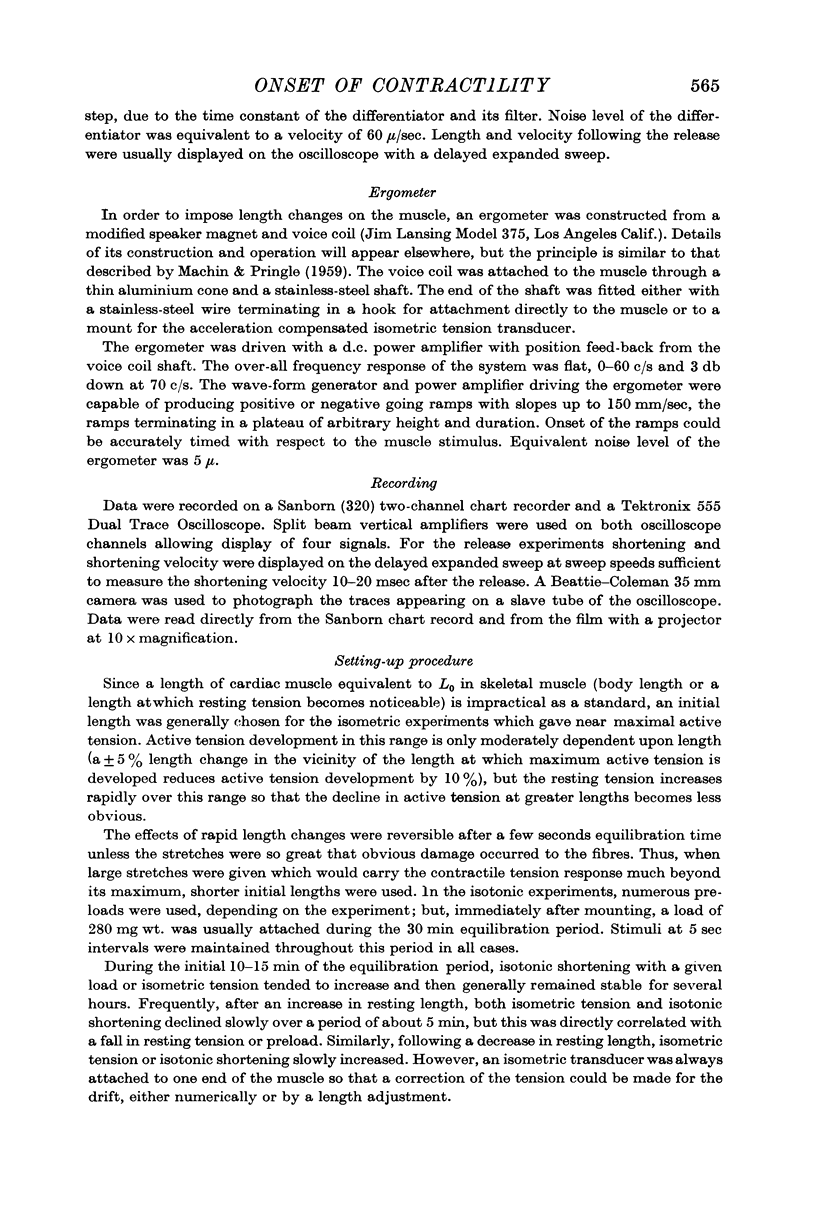
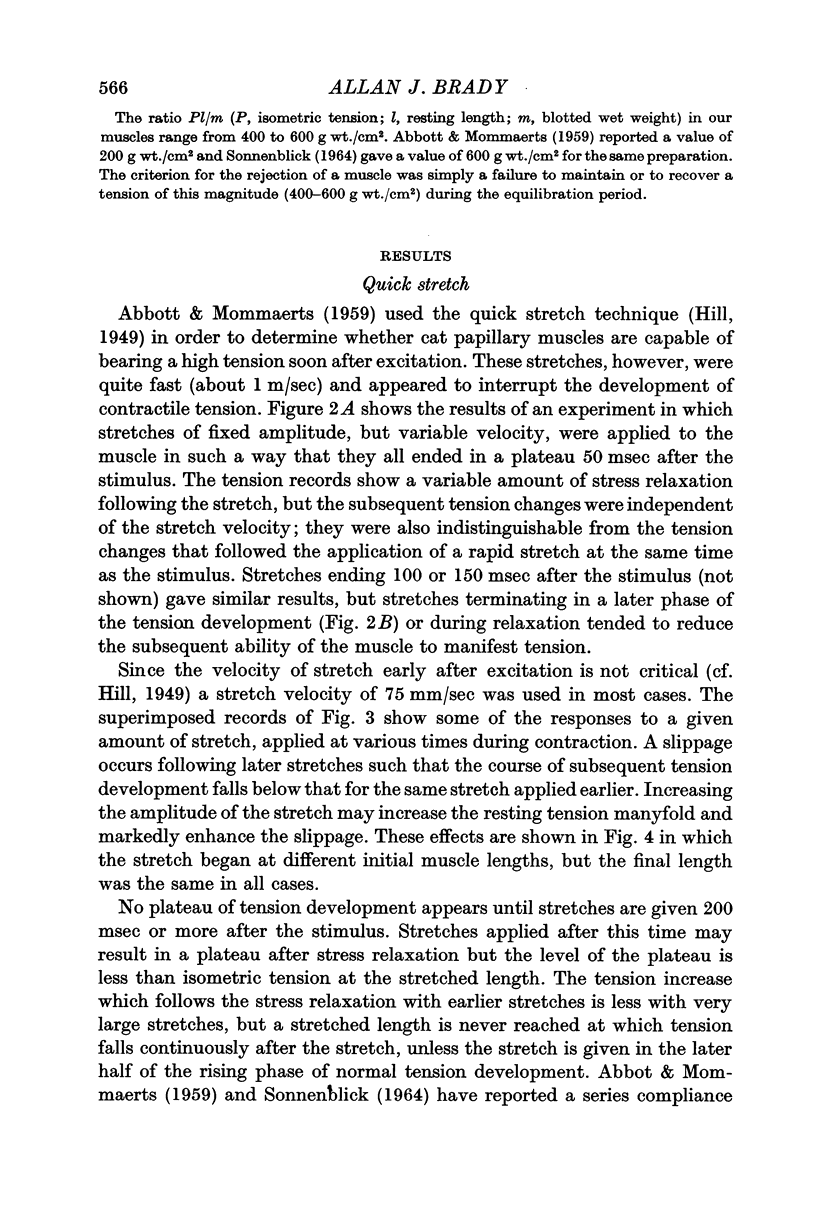
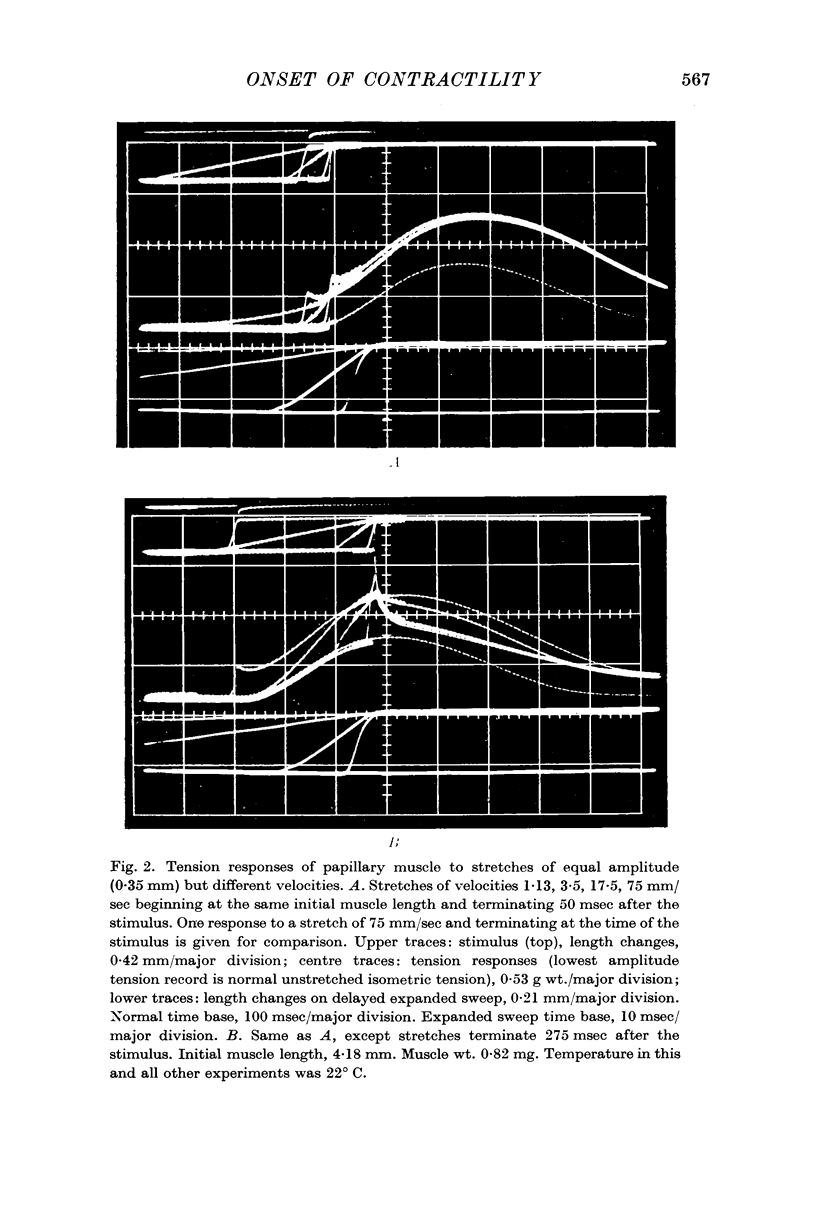
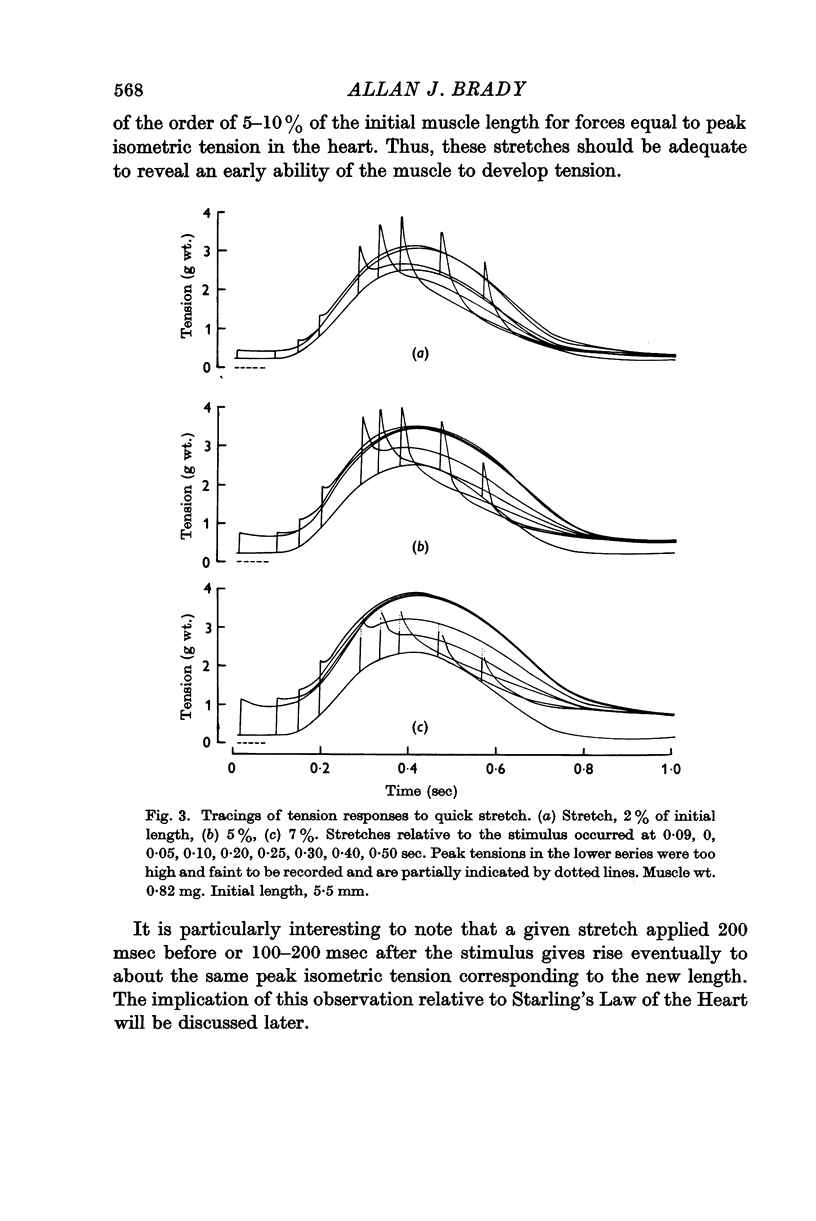
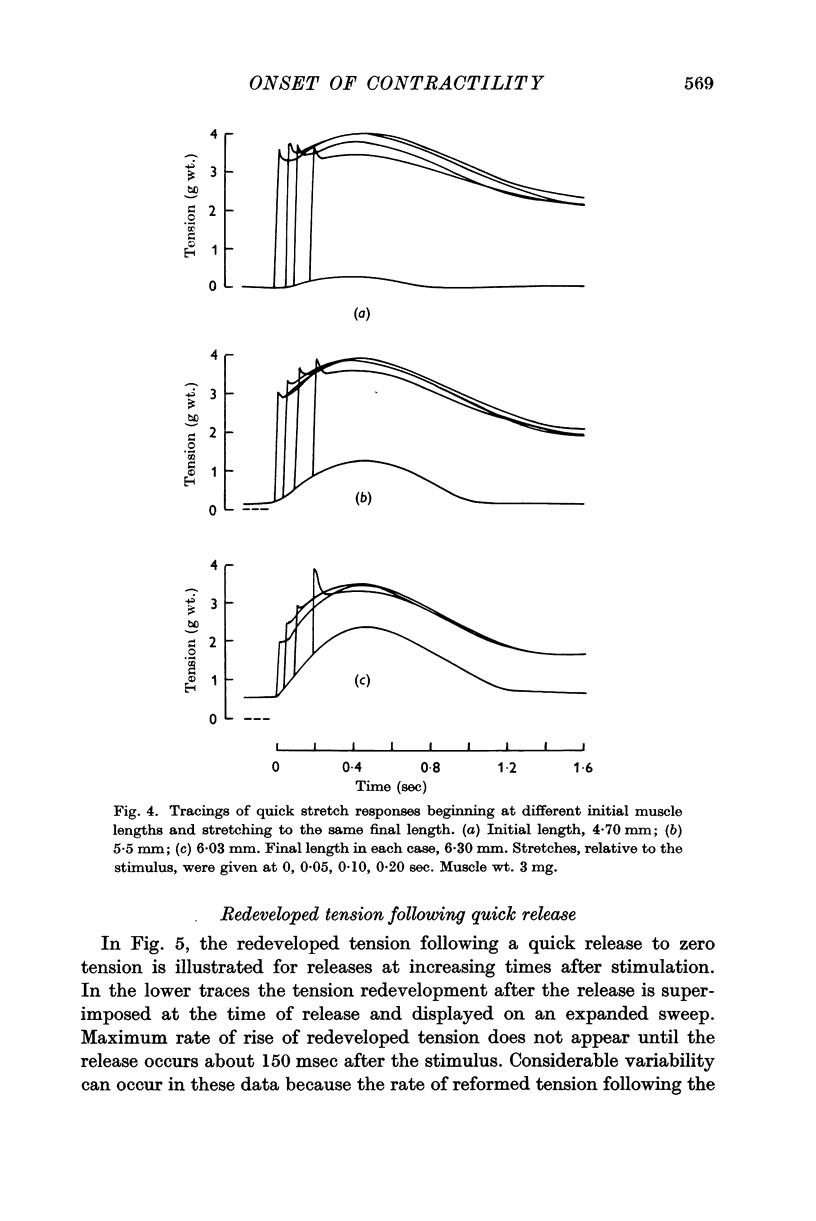
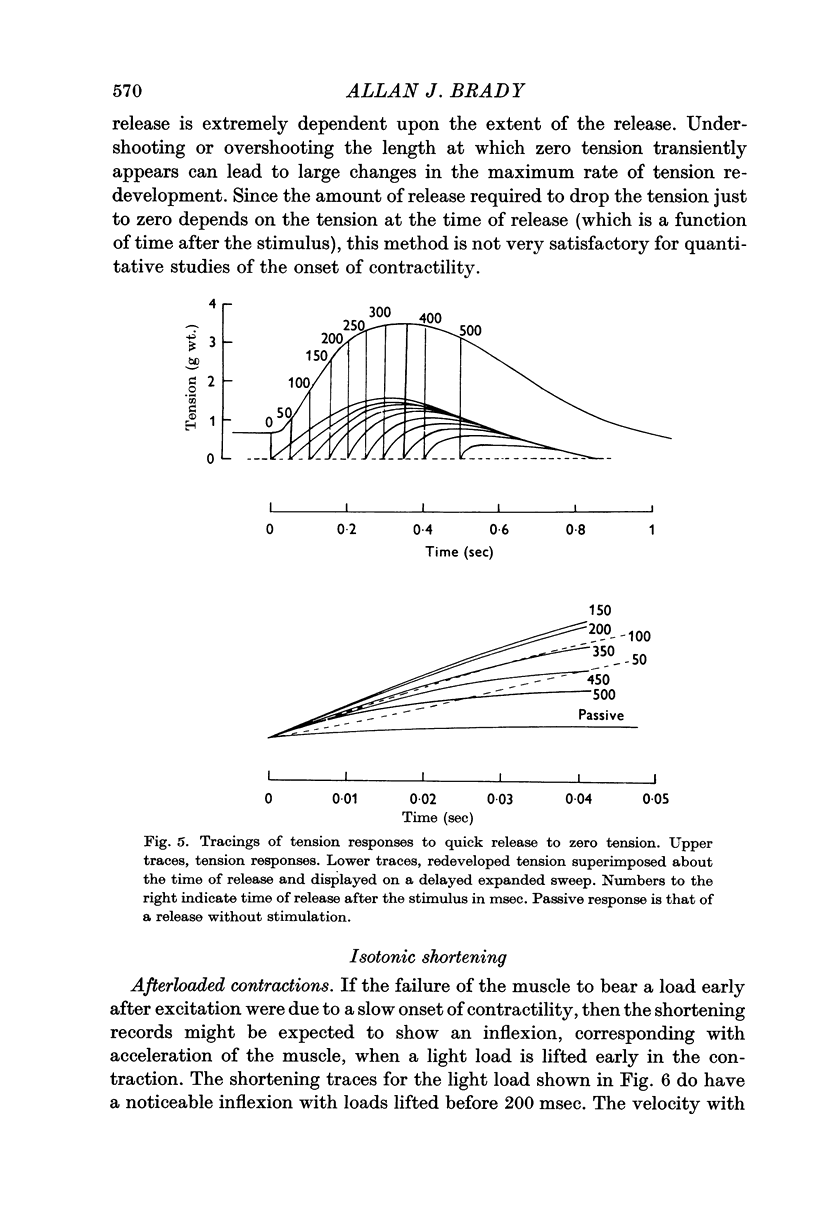
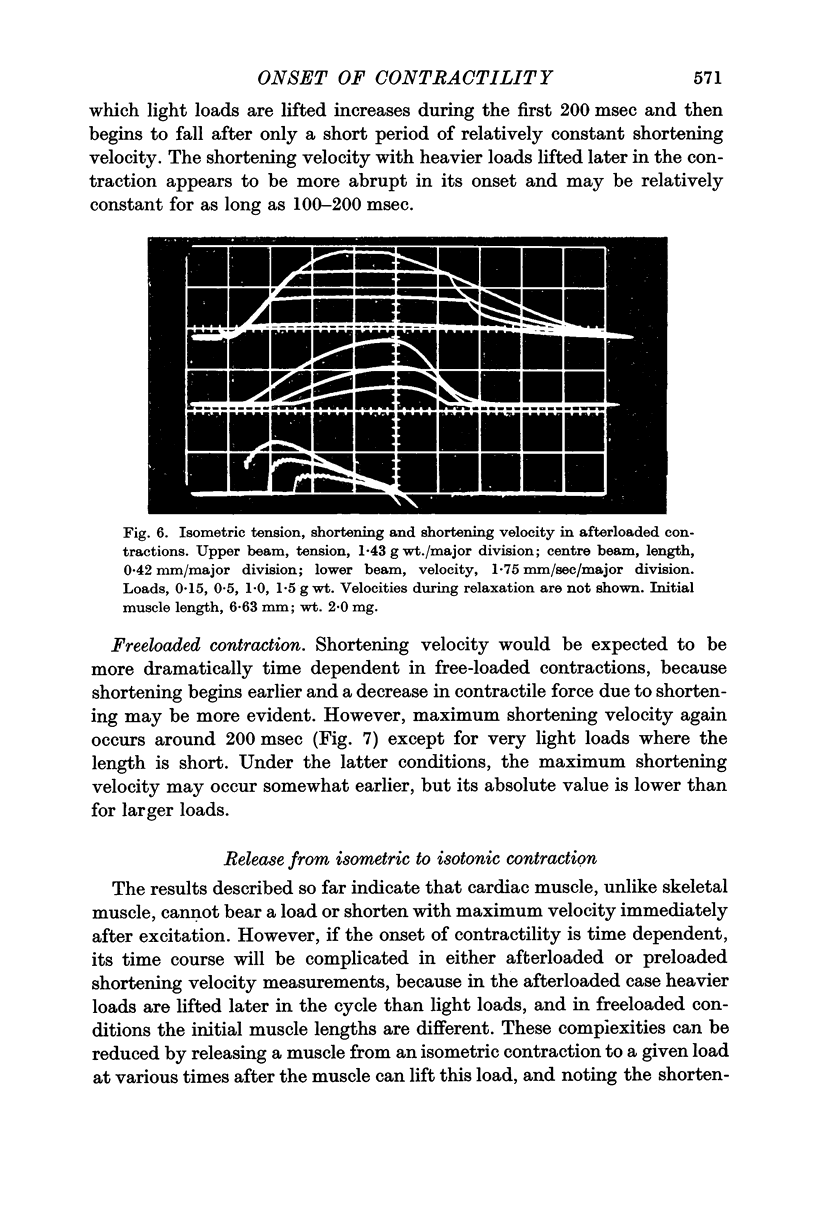
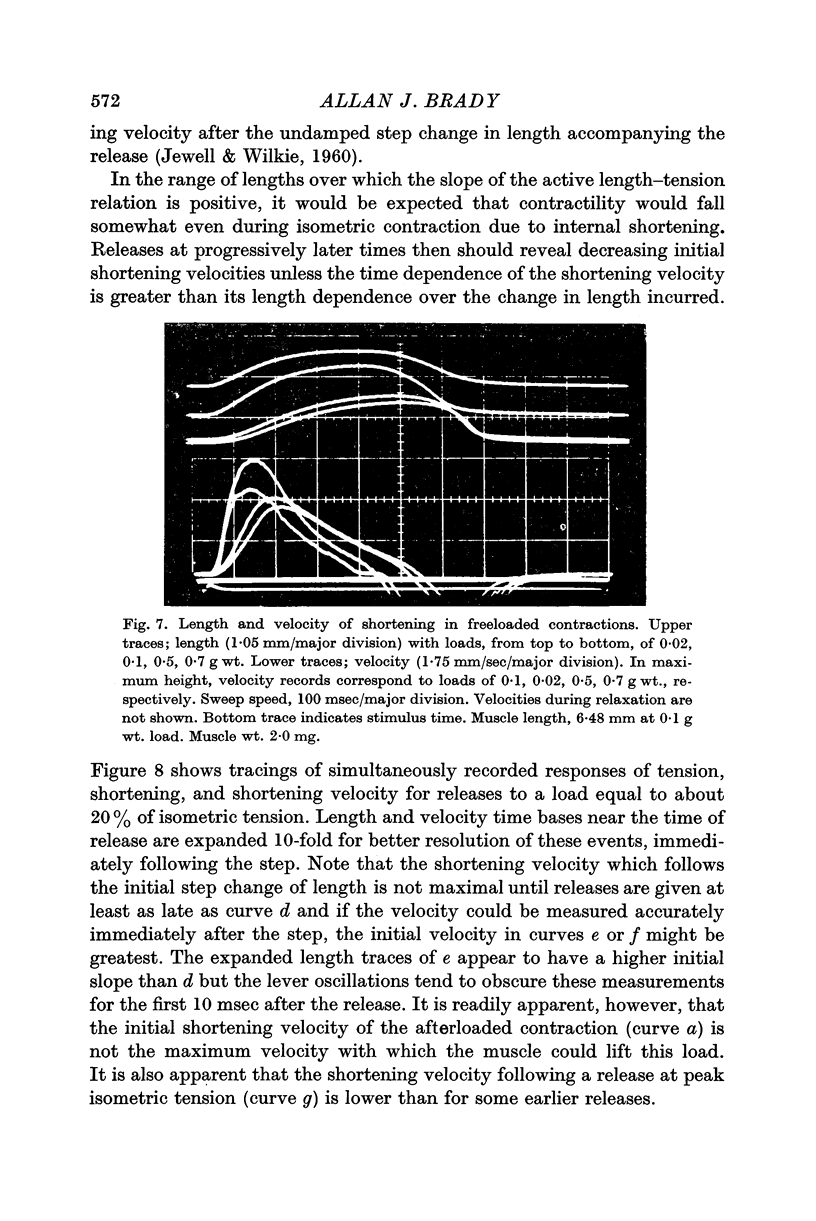
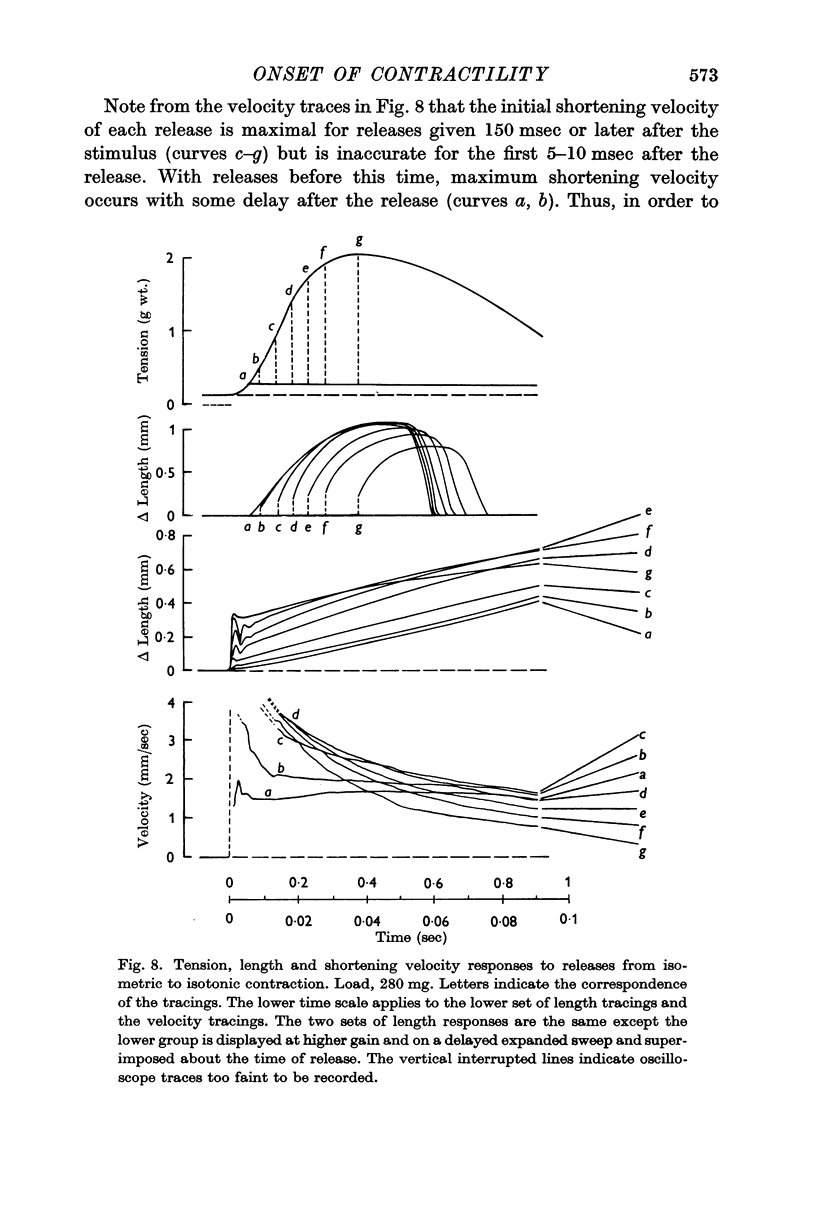
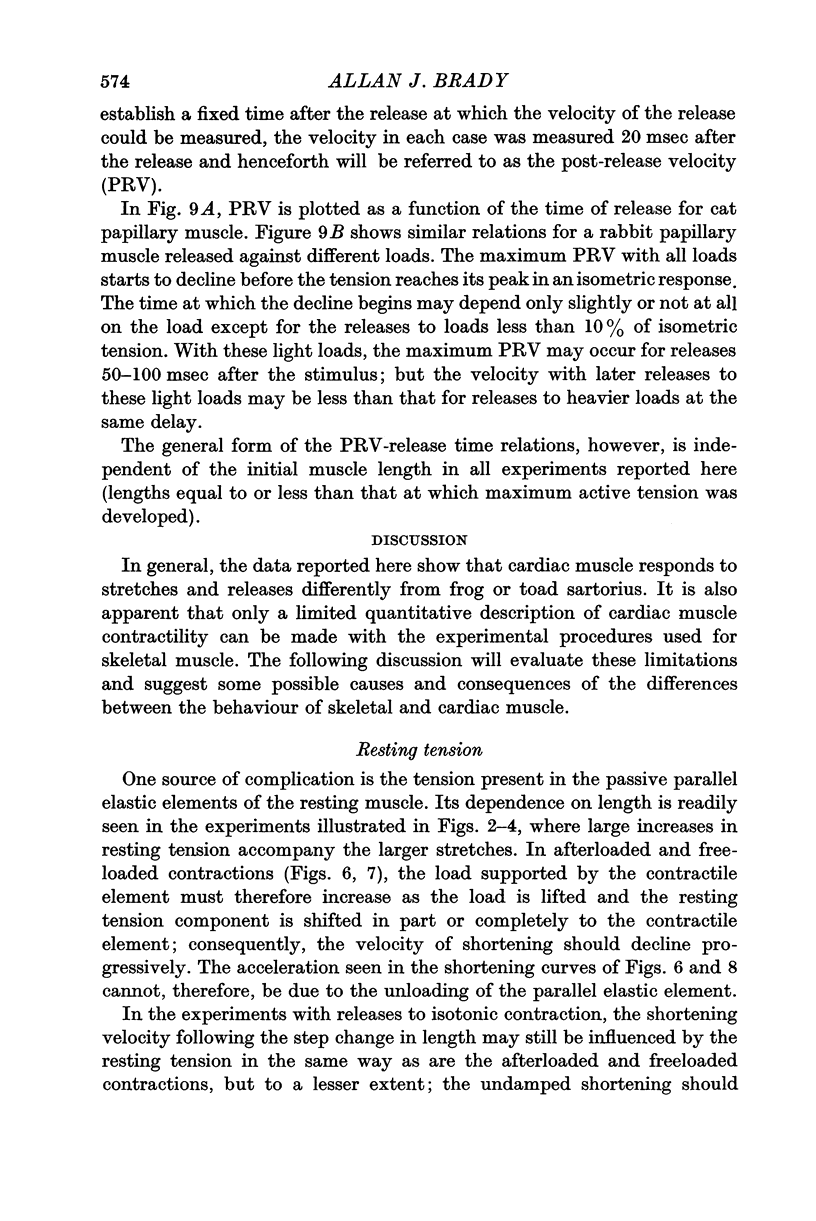
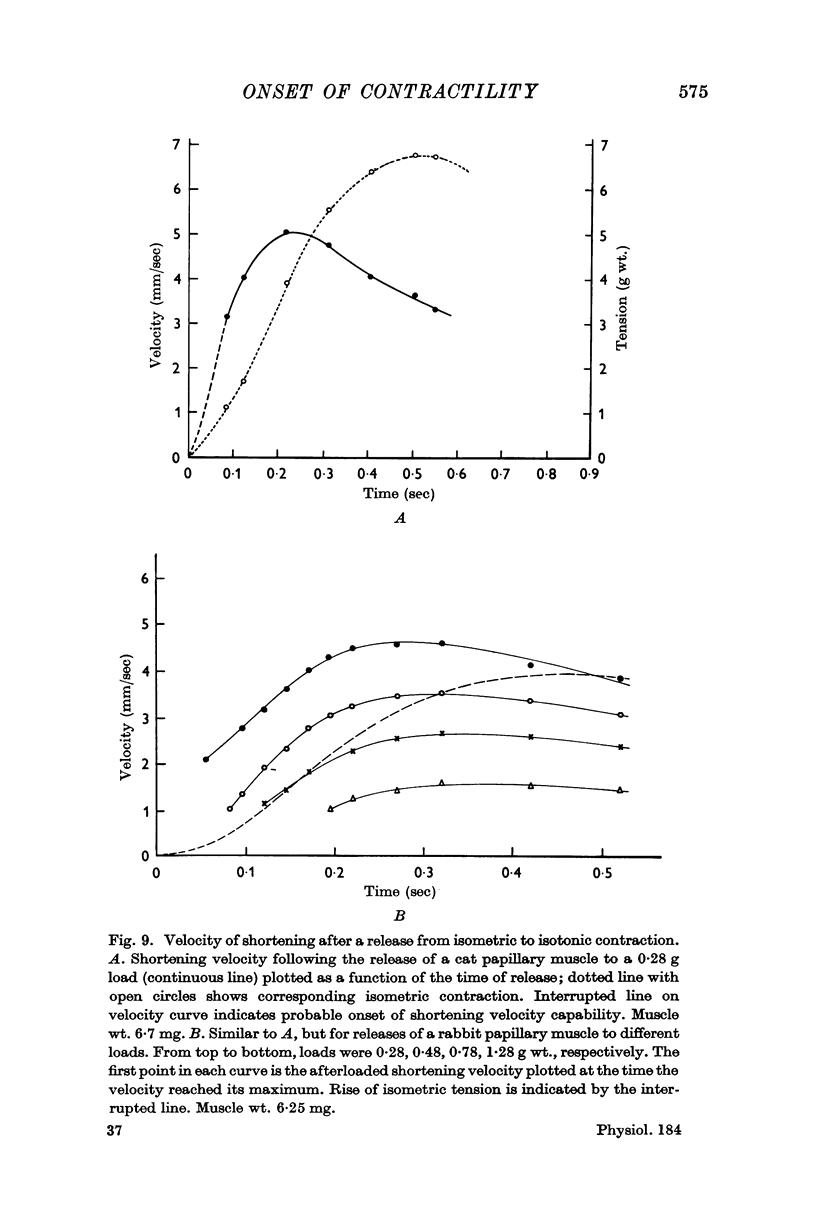
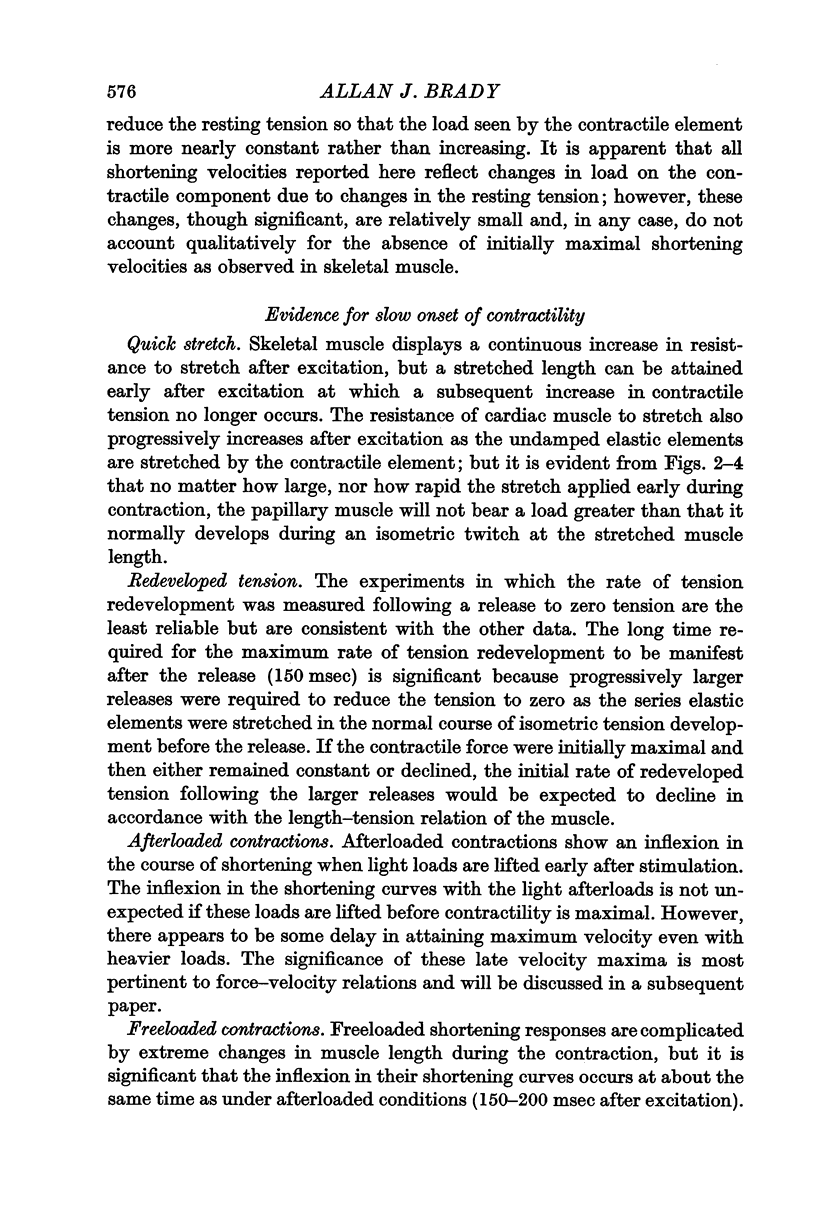

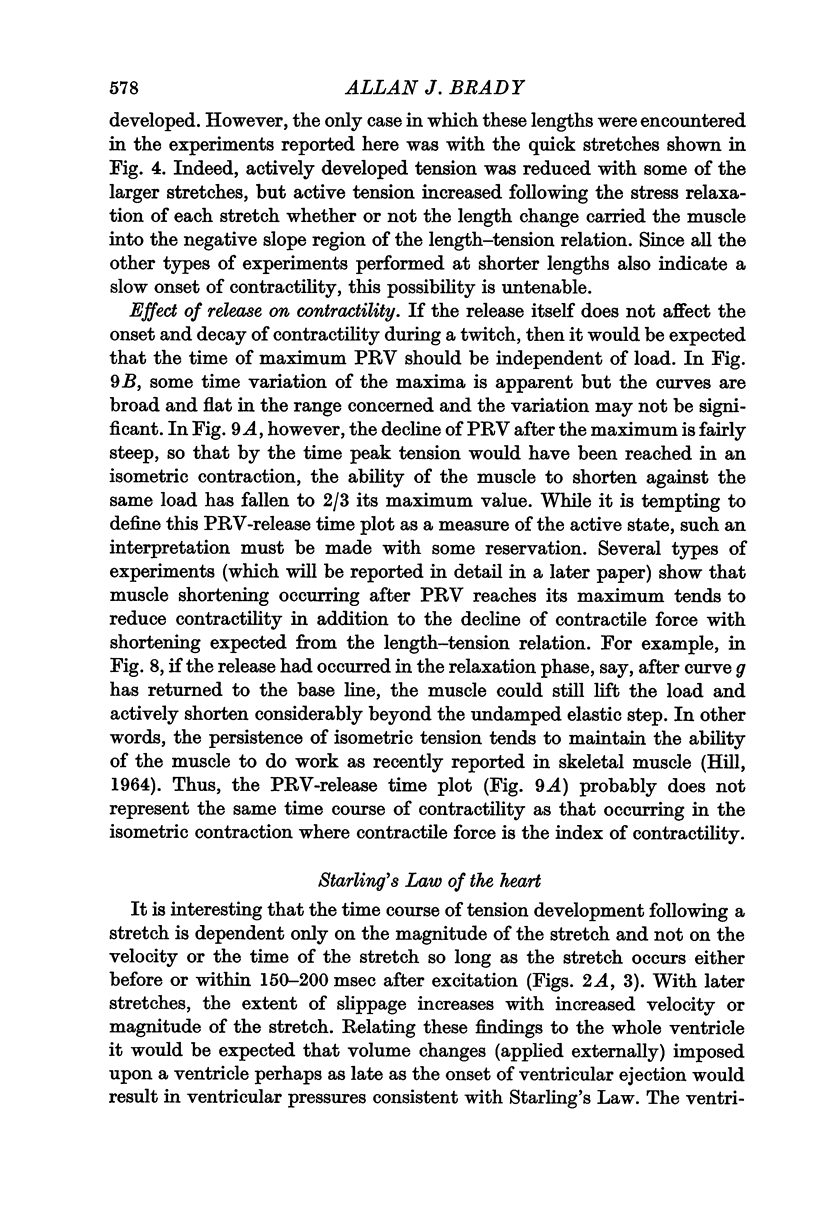
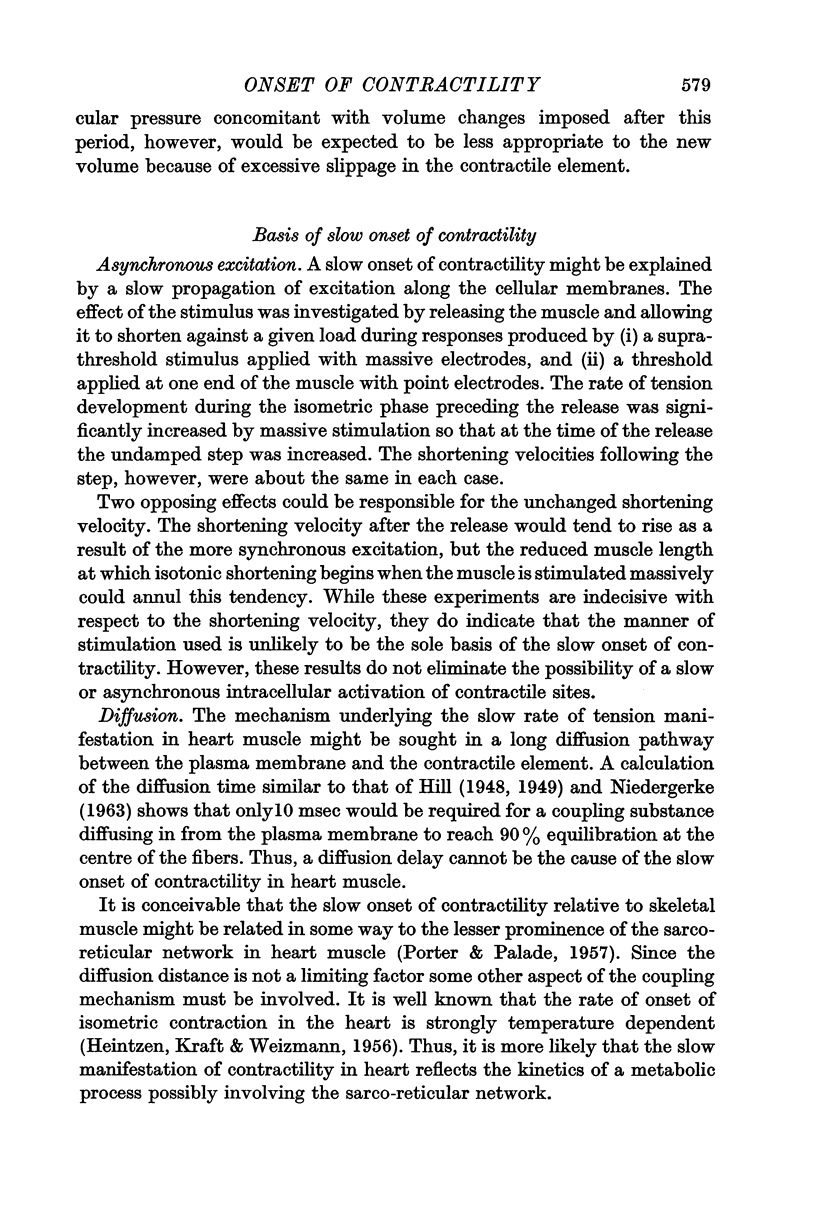
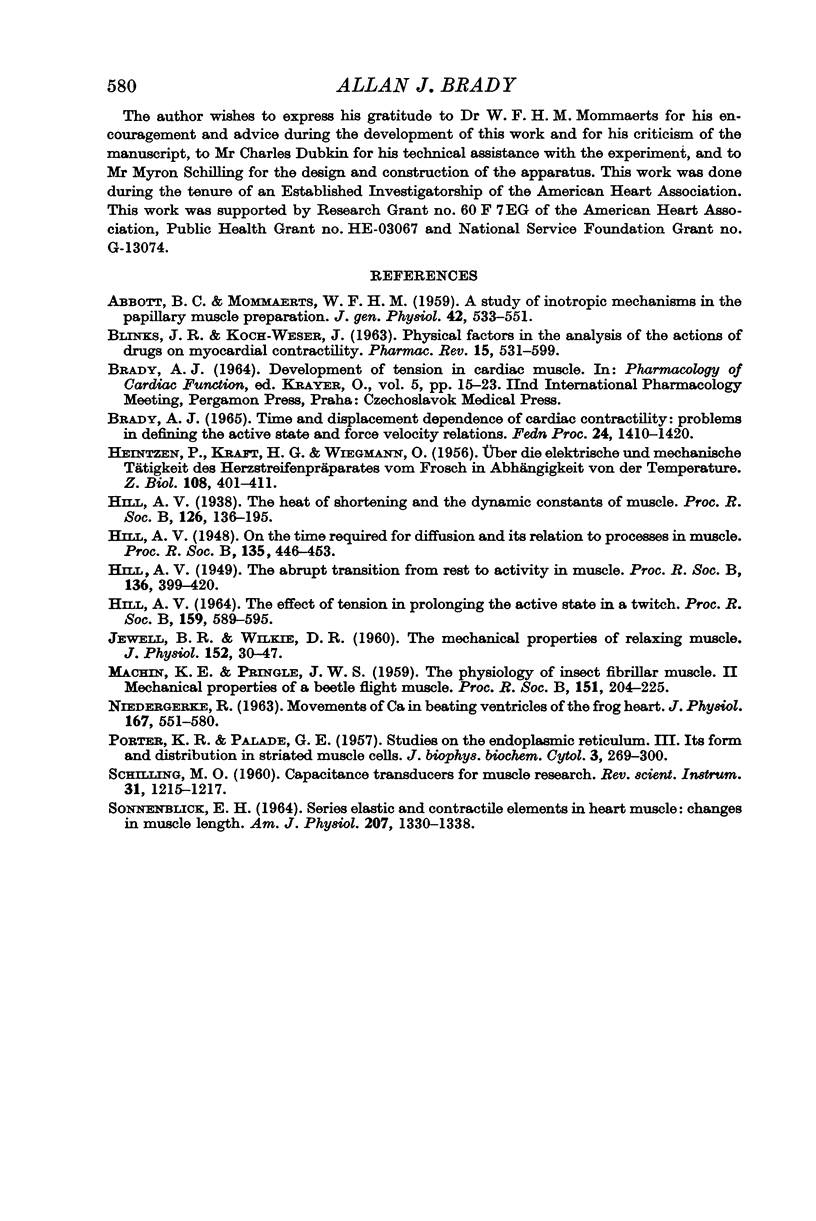
Selected References
These references are in PubMed. This may not be the complete list of references from this article.
- ABBOTT B. C., MOMMAERTS W. F. A study of inotropic mechanisms in the papillary muscle preparation. J Gen Physiol. 1959 Jan 20;42(3):533–551. doi: 10.1085/jgp.42.3.533. [DOI] [PMC free article] [PubMed] [Google Scholar]
- BLINKS J. R., KOCH-WESER J. PHYSICAL FACTORS IN THE ANALYSIS OF THE ACTIONS OF DRUGS ON MYOCARDIAL CONTRACTILITY. Pharmacol Rev. 1963 Sep;15:531–599. [PubMed] [Google Scholar]
- Brady A. J. Time and displacement dependence of cardiac contractility: problems in defining the active state and force-velocity relations. Fed Proc. 1965 Nov-Dec;24(6):1410–1420. [PubMed] [Google Scholar]
- HEINTZEN P., KRAFT H. G., WIEGMANN O. Uber die elektrische und mechanische Tätigkeit des Herzstreifenpräparates vom Frosch in Abhängigkeit von der Temperatur. Z Biol. 1956;108(6):401–411. [PubMed] [Google Scholar]
- JEWELL B. R., WILKIE D. R. The mechanical properties of relaxing muscle. J Physiol. 1960 Jun;152:30–47. doi: 10.1113/jphysiol.1960.sp006467. [DOI] [PMC free article] [PubMed] [Google Scholar]
- NIEDERGERKE R. Movements of Ca in beating ventricles of the frog heart. J Physiol. 1963 Jul;167:551–580. doi: 10.1113/jphysiol.1963.sp007167. [DOI] [PMC free article] [PubMed] [Google Scholar]
- PORTER K. R., PALADE G. E. Studies on the endoplasmic reticulum. III. Its form and distribution in striated muscle cells. J Biophys Biochem Cytol. 1957 Mar 25;3(2):269–300. doi: 10.1083/jcb.3.2.269. [DOI] [PMC free article] [PubMed] [Google Scholar]
- SONNENBLICK E. H. SERIES ELASTIC AND CONTRACTILE ELEMENTS IN HEART MUSCLE: CHANGES IN MUSCLE LENGTH. Am J Physiol. 1964 Dec;207:1330–1338. doi: 10.1152/ajplegacy.1964.207.6.1330. [DOI] [PubMed] [Google Scholar]


